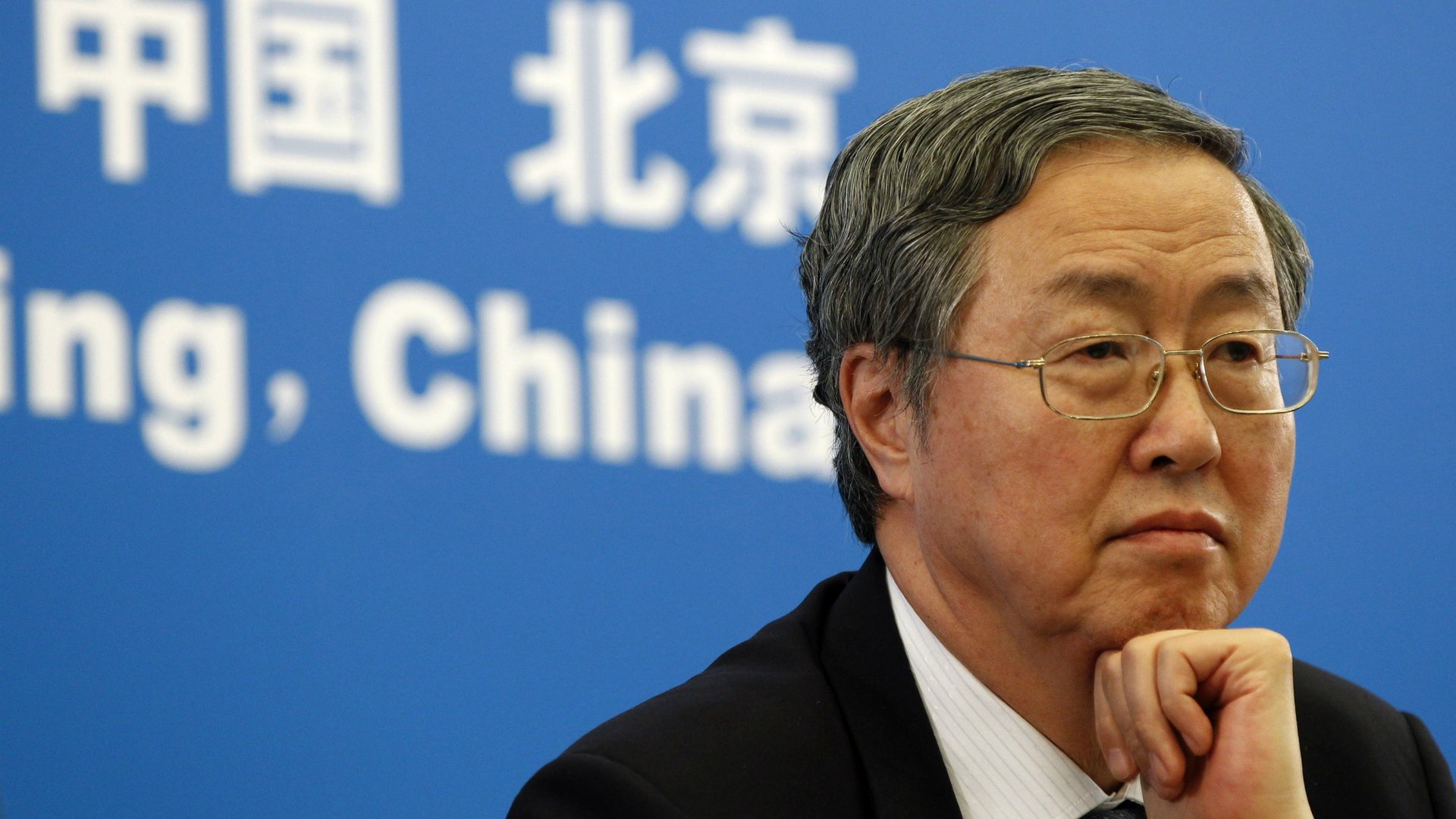China’s banking brinkmanship: an engineered financial crisis, explained
China has been cracking down on dodgy financial instruments this year by starving banks of cash. It’s a little like taking a bunch of heroin addicts and making them go cold turkey—the cure could kill them. And at first glance, it looks like the People’s Bank of China engineered a crisis that is dangerously similar to the one that precipitated global economic doom in 2008. But in this case, it might actually work.


China has been cracking down on dodgy financial instruments this year by starving banks of cash. It’s a little like taking a bunch of heroin addicts and making them go cold turkey—the cure could kill them. And at first glance, it looks like the People’s Bank of China engineered a crisis that is dangerously similar to the one that precipitated global economic doom in 2008. But in this case, it might actually work.
What crisis?
This month, inter-bank lending rates in China shot up to record highs. Hoarding their cash, banks stopped lending to businesses, and each other. The tightness was partly due to the time of year—banks were dressing up their balance sheets for a yearly audit—but there were more ominous causes too: There is growing evidence that Chinese banks have a problem with questionable off-balance sheet investments, and are relying on regular government injections of cash into the system to stay afloat.
Usually the government responds to such cash crunches by pumping more money into the financial system. This year, it refused.
Why let this happen?
Back during the 2008 financial crisis, China’s central bank injected trillions of dollars into the system to stave off a recession. This accelerated China’s infrastructure build-out and saved the country from the worst of the slowdown. But all of that cash also created a massive shadow banking sector comprised of off-balance sheet wealth management products promising massive returns.
China’s new leaders have been cracking down on WMPs and making portentous policy statements about “controlling risk.” And this week, as banks embarked on their usual pre-audit balance sheet makeovers, it applied the screws: It held back its usual infusion of liquidity, driving the interest rates on repurchase transactions (which are essentially loans between financial institutions) to record heights.
Crucially, analysts think that WMPs use those repo transactions to pad their results. The FT cited Mike Werner of Alliance Bernstein, who wrote, “We have long argued (and had our suspicions confirmed by individuals at the banks) that some wealth management products will borrow money from the banks at quarter-end to repay investors.”
If you’re a fund manager running a dodgy WMP, what better way to hide your inferior results than to borrow cheap money from a bank at the end of every quarter, especially if the bank is a large investor in your WMP? It would be like Bernie Madoff getting an ultra-low interest loan at the end of every month—he could have kept his scam going indefinitely.
That’s the practice that China’s central bank was likely trying to stop with its engineered credit squeeze. It also punished lenders who have taken on too much debt and who relied on short term repo agreements to prop up their balance sheets. We can’t know for sure, of course, since the People’s Bank of China and the rest of the country’s financial policymakers are obsessively secretive about their methods. But it’s a reasonable explanation, and is emerging as the consensus view.
Did the plan work?
Broadly speaking, China’s crackdown has been successful—WMP issuance has fallen. This week’s brinksmanship was a harsher corrective, and the results are too early to call. Although it generated some scary headlines, there was not much actual risk that a major bank would keel over from the strain—even so, Bank of China had to issue a denial that it defaulted on its obligations on Thursday afternoon. But Beijing has enough cash stored away to bail out its banking sector if it really had to.
On Friday, PBoC relented and added 50 billion yuan ($8.2 billion) in liquidity to the financial system. Along with rumors that it ordered the country’s largest banks to free up money for the banking system, that brought sky-high interbank interest rates back to earth. Still, combined with the US Federal Reserves’ market-roiling announcement that it will start to end its quantitative easing program, it made for a bracing week of financial drama—and it signalled that China’s leaders are not averse to causing a bit of drama to underscore their desire for reform in the financial industry.
“As their tenure will last for 10 years, they are willing to tolerate some short-term pain in order to achieve long-term policy objectives—preventing financial crisis and delivering sustainable growth,” the Japanese bank Nomura said in a research note. It predicted that defaults in Chinese manufacturing companies and non-bank financial institutions were imminent in the coming months.